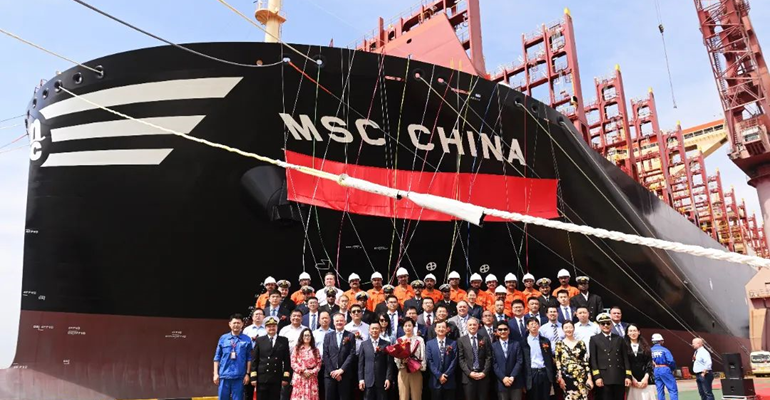In its global shipbuilding market review 2023, the research company noted global shipyard output rose by 10% on-year to 35m CGT and with China accounting for half of that output for the first time, ahead of South Korea at 26% and Japan at 14%.
South Korea led in the production of LNG vessels, but China held the greatest market share for bulkers, tankers and containerships.
Another 50% milestone was also reached in the Clarksons figures, with 50% of the orderbook by tonnage now alternatively-fuelled. Overall, the orderbook was 4% up on year at 1234m CGT with a value of $367bn.
Steve Gordon, Managing Director of Clarksons Research, said: “2023 was a year of recovering output, increasing prices and a good flow of orders for the global shipbuilding industry. On a regional level, China produced 50% of yard output and also dominated ordering, while alternative fuels moved to nearly 50% of orderbook tonnage. And while the 2024 delivery profile is dominated by container and gas, the product mix of new orders tilted towards tankers and bulkers.”
Shipbuilding power continued to consolidate in 2023, with the number of active yards producing over 20,000 dwt per year down around 35% from peak output.
On the ordering front, investment by greek shipping companies was up 60% on-year to $18bn, the highest figure since 2013. The data also recorded the first year for European owners investing more than their Asian counterparts since 2018.
Despite the increase in the orderbook, Clarksons noted underlying fleet renewal requirements as the fleet ages and emissions regulations accelerates. The observation comes as shipowners face a difficult investment decision as ships ordered today will be subject to increasing decarbonisation targets towards the IMO goal of net zero emissions by 2050.
Copyright © 2024. All rights reserved. Seatrade, a trading name of Informa Markets (UK) Limited.
Add Seatrade Maritime News to your Google News feed.  |

